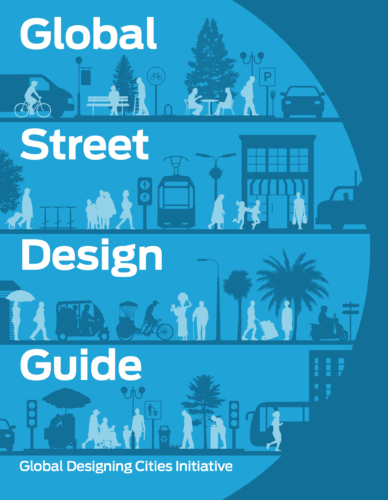8 Best Street Design Guidelines for Inspiring Streetscapes
Designing streets that prioritize safety, accessibility, and aesthetic appeal is a cornerstone of modern urban planning. Below are six essential street design guidelines that can inspire and guide professionals in creating exceptional streetscapes. Each guide provides valuable insights and technical details tailored to different contexts and needs, making them indispensable for urban design, streetscape projects, and landscape architecture.

1. Urban Street Design Guide
Published by NACTO, this guide emphasizes people-focused street design that promotes safe and vibrant urban spaces. It covers strategies for creating complete streets, designing for multi-modal transportation, and integrating green infrastructure. This guide is particularly useful for urban planners, streetscape designers, and architects who aim to reshape city streets to enhance livability and sustainability.
Key Features:
- Focus on complete streets for all users.
- Integration of green infrastructure.
- Design solutions for multi-modal transportation.

2. Blueprint for Autonomous Urbanism: Second Edition
This forward-thinking guide explores the integration of autonomous technologies in urban environments, focusing on human-centered street design. It addresses the challenges and opportunities of shared, automated mobility systems while emphasizing safety, equity, and sustainability. Urban designers and landscape architects can use this as a visionary tool to adapt their projects for the future of mobility.
Key Features:
- Adaptation of streets for autonomous vehicles.
- Emphasis on equity and sustainability.
- Future-proofing urban design concepts.
3. Street Design Manual for Oslo
Tailored for Oslo’s unique urban context, this manual provides comprehensive guidance on creating livable and inclusive streets. It emphasizes sustainable street design, prioritization of pedestrians and cyclists, and the integration of natural elements into streetscapes. This guide is perfect for cities aiming to enhance public spaces with ecological and community-friendly solutions.
Key Features:
- Focus on pedestrian and cyclist priority.
- Integration of natural and sustainable elements.
- Strategies for livable and inclusive streets.

4. Global Street Design Guide
Developed with input from experts across 72 cities in 42 countries, this guide redefines the role of streets globally. It offers detailed strategies for designing streets that prioritize pedestrians, cyclists, and transit users while promoting sustainable urban mobility. Practitioners in urban planning and streetscape design will find this a valuable resource for implementing best practices on a global scale.
Key Features:
- Emphasis on sustainable urban mobility.
- Global best practices and case studies.
- Focus on pedestrian and transit-oriented design.


5. London Cycling Design Standards (LCDS)
The LCDS provides practical guidelines for integrating cycling infrastructure into urban environments. It aims to encourage cycling as a primary mode of transport by designing safe, efficient, and attractive cycling routes. This guide is essential for creating cyclist-friendly streets that align with modern sustainable urban design principles.
Key Features:
- Safe and efficient cycling infrastructure design.
- Practical strategies for urban cycling integration.
- Support for sustainable transportation goals.

6. Streetscape Guidance
This comprehensive guide defines the standards for London’s streets and public spaces. It provides detailed information on design aspirations, material selection, installation techniques, and maintenance. Whether it’s a major project or a local adjustment, this guide ensures high-quality, sustainable, and visually appealing streetscapes.
Key Features:
- Detailed material and design standards.
- Guidelines for sustainable streetscape projects.
- Focus on installation and maintenance practices.
7. Boston Complete Streets Design Guidelines
The Boston Complete Streets Design Guidelines provide a framework for designing streets that balance safety, mobility, and accessibility for all users. This guide promotes vibrant streetscapes with a focus on multi-modal transportation, green infrastructure, and community engagement. It’s a valuable resource for creating streets that enhance urban life.
Key Features:
- Balance of safety and mobility for all users.
- Strategies for vibrant and inclusive streetscapes.
- Integration of green infrastructure.

8. Designing Streets for Kids
Building on the success of the Global Street Design Guide, this guide focuses on creating child-friendly streets. It includes design recommendations and case studies from cities worldwide, highlighting streets that are safe, enjoyable, and inspirational for children and caregivers. This guide is essential for planners looking to create spaces that prioritize younger generations.
Key Features:
- Child-friendly street design strategies.
- Case studies showcasing safe and engaging streets.
- Focus on accessibility for all ages and abilities.

Each of these guidebooks offers unique insights and approaches, making them indispensable for professionals involved in urban design, streetscape planning, and landscape architecture. Download these resources today and start transforming your streetscapes with evidence-based strategies and creative solutions!






Leave a Reply